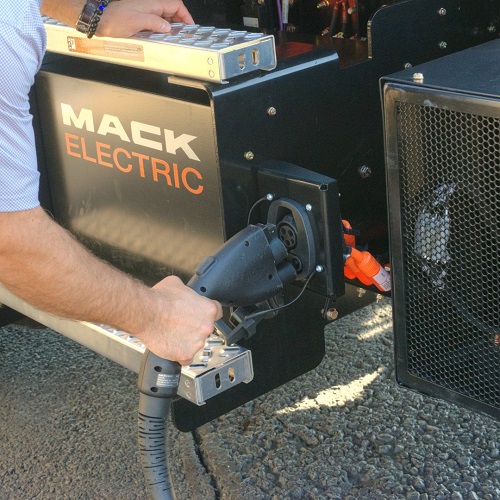The recently unveiled National Zero-Emission Freight Corridor Strategy – developed by the Joint Office of Energy and Transportation, the U.S. Department of Energy (USDOE), the U.S. Department of Transportation, and the Environmental Protection Agency – aims to become the federal government’s guidebook for the planned deployment of medium- and heavy-duty vehicle electric charging and hydrogen fueling infrastructure from 2024 to 2040.
[Above image by FHWA]
That zero-emission strategy is built around public investment to amplify private sector momentum, focusing on utility and regulatory energy planning, aligning industry activity, and improving air quality in local communities affected by diesel emissions, the agency said.
“For over a century, petroleum-fueled freight has transported vital food and resources to American families but at the same time, these vehicles have also contributed to lower public health, especially in densely populated communities,” noted USDOE Secretary Jennifer Granholm in a statement.
“[The plan] addresses this issue head-on with innovative strategies to transform freight so it not only supports American families and businesses, but also protects the environment for future generations,” she added.

Providing ubiquitous and convenient access to electric vehicle or EV charging and hydrogen refueling along our nation’s freight corridors and at intermodal freight facilities and high-usage ports is key to achieving U.S. goals to get at least 30 percent medium- and heavy-duty vehicle sales to be zero-emission by 2030 and 100 percent by 2040, USDOE noted.
To attain that goal, the new zero-emission strategy seeks to align public policy and investments by prioritizing, sequencing, and accelerating infrastructure along the National Highway Freight Network in four phases:
- Establish priority hubs based on freight volumes (2024-2027)
- Connect hubs along critical freight corridors (2027-2030)
- Expand corridor connections initiating network development (2030-2035)
- Achieve a national network by linking regional corridors for ubiquitous access (2035-2040)
In alignment with the Joint Office’s National Zero-Emission Freight Corridor Strategy, the Federal Highway Administration is announcing the designation of National EV Freight Corridors along the National Highway Freight Network and other key roadways.
“Medium- and heavy-duty trucks in our current freight network contribute approximately 23 percent of greenhouse gas emissions in the U.S. transportation sector,” noted FHWA Administrator Shailen Bhatt.
“These new designations will help to grow our national EV charging network, encourage clean commerce within the freight community and support … achieving net-zero emissions for the nation by 2050,” he said.
 Nation
Nation
Registration Open for AASHTO’s Winter Rail Meeting
December 19, 2025 Nation
Nation

